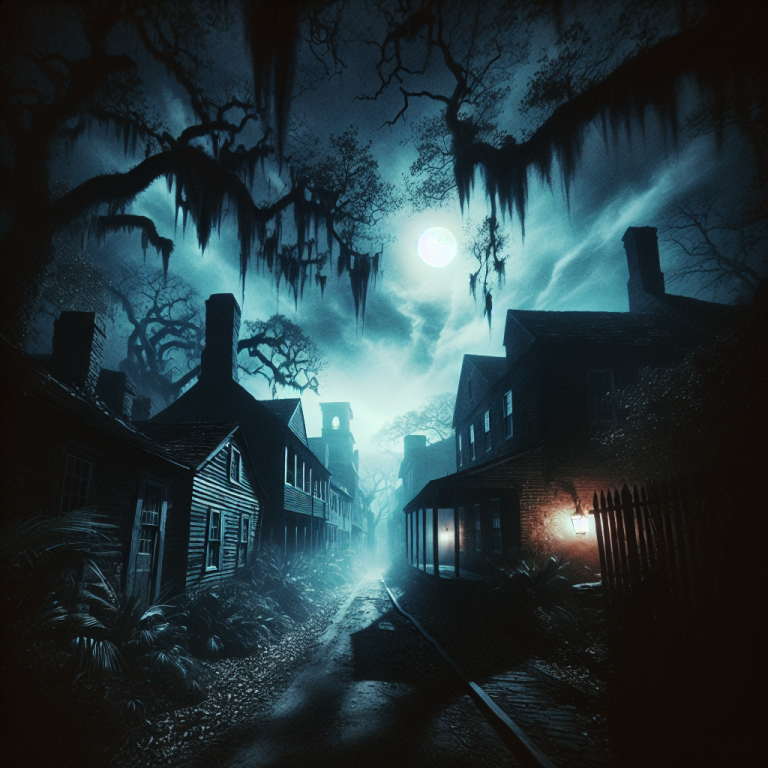
Introduction to Georgetown SC Historic Plantations
In my experience researching Georgetown SC historic plantations, I’ve found that they offer a captivating window into the past—a story of resilience, culture, and complex history. I want to share what I’ve learned about these plantations because I believe they are more than just scenic sites; they are living narratives of the South’s heritage. When I first visited Georgetown, I was struck by how much history is embedded in the land and architecture of Georgetown SC historic plantations.
From what I’ve discovered, these sites tell stories that go far beyond their picturesque facades. They reveal the stories of the people who lived and worked there—stories of struggle, prosperity, and transformation. I recommend anyone interested in American history, architecture, or cultural heritage to explore the rich tapestry woven through these Georgetown SC historic plantations. I hope this guide helps you appreciate their significance as much as I do.
The Historical Significance of Georgetown SC Historic Plantations
Understanding the history behind Georgetown SC historic plantations has been a fascinating journey for me. From my research, I’ve learned that these plantations played a vital role in the economic and social development of the region. During the colonial period and into the 19th century, they were centers of agriculture, particularly rice and cotton cultivation, which shaped the area’s landscape and economy.
I believe that appreciating the historical significance of Georgetown SC historic plantations involves more than admiring their architecture; it requires understanding the complex history of slavery, resilience, and community that these sites embody. From what I’ve read, many of these plantations were also hubs of cultural exchange, blending African, European, and Native American influences. I recommend delving into local archives and visiting these sites to gain a deeper understanding of their importance in American history.
Exploring Notable Georgetown SC Historic Plantations
One of my favorite aspects of exploring Georgetown SC historic plantations is discovering the stories behind each site. For example, I’ve visited several plantations, but a standout for me was the Hopsewee Plantation, known for its beautifully preserved architecture and rich history. From my experience touring it, I found that the plantation’s story of early American entrepreneurship was truly inspiring.
**The Historic Homes of Georgetown**
I’ve found that many of the plantations, like the Wedgefield Plantation, boast stunning antebellum architecture that reflects the grandeur of their time. I recommend taking guided tours, as they often include stories of the families who built and lived in these homes, revealing fascinating insights into life during that era.
**The Role of Plantations in Local Economy**
From what I’ve learned, plantations like the Prince George Winyah Episcopal Church and others contributed significantly to the region’s development. It’s remarkable how these sites connect to the broader narrative of American history, especially regarding agriculture and labor systems.
**Hidden Gems Among Georgetown SC Historic Plantations**
I’ve also discovered lesser-known sites that hold unique stories, like the historic rice fields and slave cabins, which provide a more comprehensive picture of plantation life. I recommend exploring these hidden corners to truly appreciate the depth of history behind Georgetown SC historic plantations.
Uncovering Hidden Stories and Personal Encounters
In my experience, the most powerful moments come when I stumble upon stories that are often overlooked. I’ve discovered that some plantations have preserved slave quarters and artifacts that tell haunting, yet essential stories of resilience and struggle. Visiting these sites, I’ve felt a profound connection to the people who endured unimaginable hardships.
From what I’ve learned, I believe that understanding the full history of Georgetown SC historic plantations requires acknowledging both the grandeur and the suffering embedded within these sites. I recommend engaging with local guides or historians who are passionate about sharing these stories—they often reveal hidden narratives that aren’t found in textbooks. My personal encounters have deepened my appreciation for the complex history these plantations hold, and I encourage others to approach them with an open mind and respectful curiosity.
Resources and Further Reading on Georgetown SC Historic Plantations
References and Resources
Throughout my research on Georgetown SC historic plantations, I’ve found these resources incredibly valuable. I recommend checking them out for additional insights:
Authoritative Sources on Georgetown SC historic plantations
-
National Park Service – Georgetown
nps.govThis resource provides official historical summaries and visitor information about Georgetown’s historic sites, including plantations and preserved buildings.
-
South Carolina Parks and Recreation
southcarolinaparks.comOffers detailed histories and visitor info for many plantations and historic sites across South Carolina, including Georgetown.
-
Library of Congress – South Carolina History
loc.govProvides extensive archives and historical documents related to plantations, slavery, and regional history.
-
South Carolina Information Highway (SCIWAY)
sciway.netOffers in-depth articles and photo collections about Georgetown SC historic plantations, including lesser-known sites.
-
History Channel – American South
history.comProvides broader context about the role of plantations in American history, including stories specific to South Carolina.
-
South Carolina Historic Preservation Office
scdah.sc.govFocuses on preservation efforts and detailed histories of historic sites, including plantations, across South Carolina.
-
American Heritage Magazine
americanheritage.comFeatures articles on American history with a focus on architecture, culture, and the stories behind historic plantations.
-
South Carolina Historical Society
schsonline.orgProvides access to archives, research articles, and educational resources about South Carolina’s historic plantations and cultural history.
Frequently Asked Questions
Frequently Asked Questions
What makes Georgetown SC historic plantations unique?
In my experience, Georgetown’s plantations stand out because of their well-preserved architecture and the stories they hold about the region’s complex history. Many sites have been thoughtfully restored, offering insights into both the grandeur of plantation life and the hardships faced by enslaved people. I believe that visiting these plantations allows visitors to connect personally with history that shaped South Carolina and America as a whole.
Can I visit the Georgetown SC historic plantations today?
Absolutely! From my visits and research, I’ve found that many plantations are open to the public, offering guided tours, exhibits, and sometimes even reenactments. I recommend checking each site’s official website for hours and special events to enhance your experience. These visits are a great way to immerse yourself in the history and culture of Georgetown’s plantations.
What should I keep in mind when exploring Georgetown SC historic plantations?
In my opinion, approaching these sites with respect and curiosity is key. Many plantations include sensitive historical artifacts related to slavery and hardship, so I recommend being mindful and respectful during your visit. I also suggest taking guided tours or reading up beforehand—they often reveal hidden stories and context that make the experience more meaningful.
How can I learn more about the history of Georgetown SC historic plantations?
In my experience, visiting local museums, reading historical publications, and engaging with knowledgeable guides are excellent ways to deepen your understanding. I recommend exploring online archives and research articles dedicated to South Carolina’s plantation history. These resources have helped me appreciate the full scope of what these sites represent.
Conclusion
In conclusion, my research on Georgetown SC historic plantations has shown me just how rich and layered their history truly is. These sites are invaluable for understanding the cultural, economic, and social forces that shaped the South and the nation. I hope this guide helps you appreciate the significance of these plantations and inspires you to explore them firsthand.
Based on my experience, I believe that uncovering their hidden stories offers a deeper connection to the past—one that’s essential for understanding our shared history today. Whether you’re a history enthusiast, a curious traveler, or someone seeking meaningful cultural experiences, Georgetown SC historic plantations have something truly special to offer.
Find out more information about “Georgetown SC historic plantations”
Search for more resources and information:








